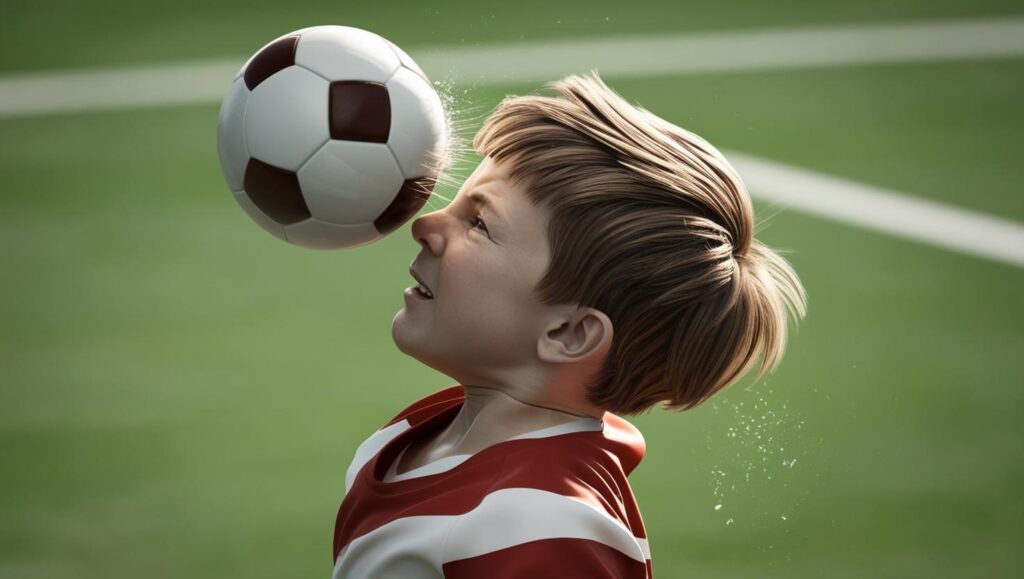
By Digital Content Creator and Chief Sports Writer – Tony Clark

By 2026/27, no player under 12 will be allowed to head the ball in competitive matches. It’s a move designed to protect young players’ long-term brain health – but what does that mean for the future of the game?
More importantly, how will it affect the development of tomorrow’s footballers?

This isn’t just a knee-jerk reaction – it’s based on growing evidence that heading the ball can cause serious harm to developing brains.
Studies have linked frequent heading to an increased risk of neurodegenerative diseases such as dementia and CTE (chronic traumatic encephalopathy). Research shows that heading a football can produce force similar to a punch in boxing — and no parent wants their seven-year-old taking hits like that every weekend.
By cutting out heading in youth football, the FA hopes to safeguard players while they’re still growing and developing.

We asked Coach X – Club Legends’ go-to reclusive, no-nonsense, mystery grassroots coach (with over two decades of experience) – to give their brutally honest take.
And let’s just say: he, she or they aren’t convinced.
“So what does this mean?” asks Coach X. “If the ball goes up in the air now, what are kids supposed to do? Jump out the way?”
The Coach – whose true identity remains shrouded in a fog of enigma* – points out that without heading, defending against long balls could become chaotic – especially in younger age groups where there’s no offside rule.
“If I was coaching 5-a-side and playing to win,” Coach X explains, in their distinctive distorted voice, “I’d tell my keeper to just hoof the ball long every time. Stick two players up top, leave them offside the whole game, and just lump the ball over the top to them. No one can head it away, so why not?
Yes, I mean, kids could chest the ball down and skilfully trap it with their feet to the delight of onlookers…” – proclaims Coach X:
“But that’s not as good as heading.”
*Incidentally, if you were to examine that fog under a microscope, all you’d see were thousands upon thousands of tiny question marks.
Coach X’s biggest worry? How this rule change could affect player development.
“How are we EVER going to develop the next Harry Maguire?” they ask. “Or even better – the next Dan Burn?”
Players known for their aerial dominance may become rare if kids don’t start learning heading technique until they’re 12. By that point, timing, bravery, and positioning could be harder to master.
While protecting young players’ health is vital, grassroots coaches may need to get creative in teaching defensive awareness and physicality without relying on headers.

For coaches, this shift will demand tactical adjustments. Traditional defensive strategies may need to evolve, with players relying more on body positioning, intercepting passes, and controlling the ball on the ground.
The FA’s new rules — including pass-ins and dribble-ins replacing throw-ins — are designed to encourage more fluid and exciting technical play. While this may benefit skill development in pre-teens, it also places added pressure on hard working, beleaguered coaches. They might just have to rethink their game plans.
For all the concerns, this move is undeniably a step toward safer football. Thousands of young players will avoid the risks linked to frequent heading — and that’s a big win.
Scotland and the United States have already introduced similar bans with no obvious dip in excitement or enjoyment.
And who knows? By forcing players to develop better touch, positioning, and passing skills from an early age, this change could produce a new generation of technically gifted players – better suited to the fast-paced, possession-based football we see thriving today.

Football is evolving. Coaches will need to adapt, parents will need to manage their expectations, and kids will have to embrace a slightly different style of play.
For clubs and leagues, this shift is a challenge – but also an opportunity. Teaching players to excel without relying on headers could unlock new levels of skill and creativity. As ever, the future remains a mystery.
However, at Club Legends, we believe football is about more than just plain boring old winning – it’s about enjoyment, development, and creating lasting memories (which you can capture with one of our fantastic photo days). Whether your team is pushing for trophies – like Newcastle United – or just playing for fun, embracing these changes with positivity seems to be the way forward.
What do you think? Will this change improve youth football – or are we taking things too far? Let us know in the comments below – or EVEN better, on our social media. 👇